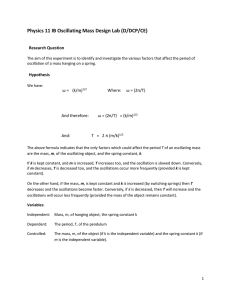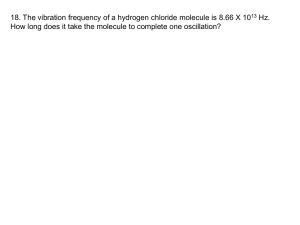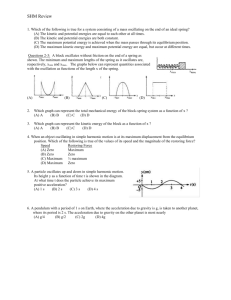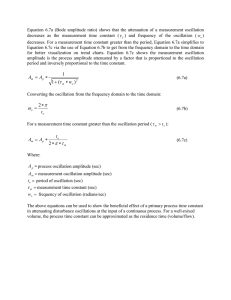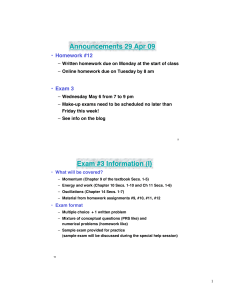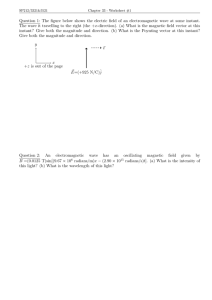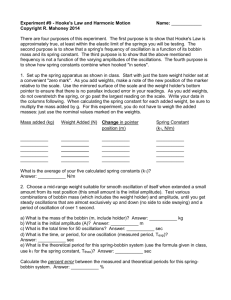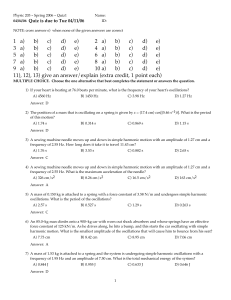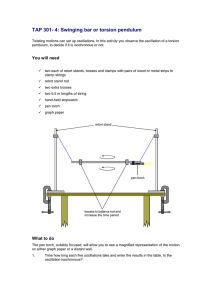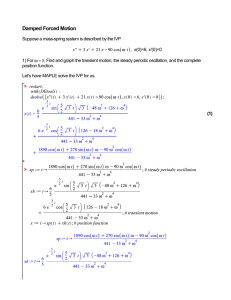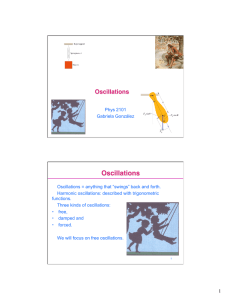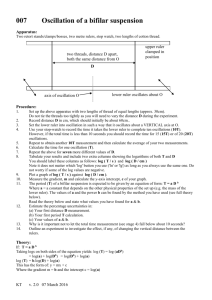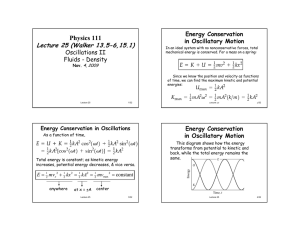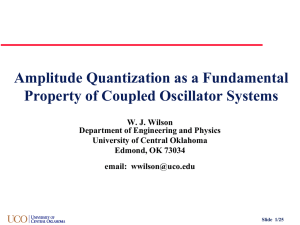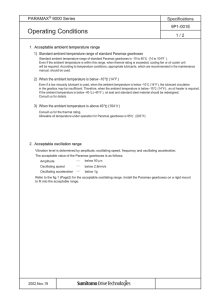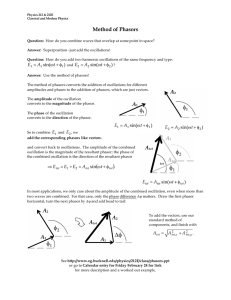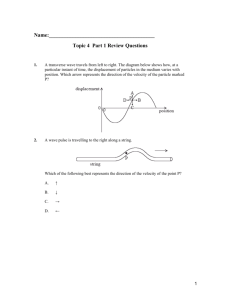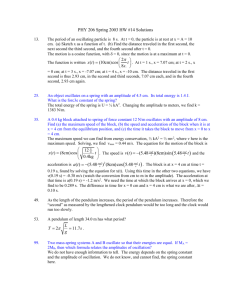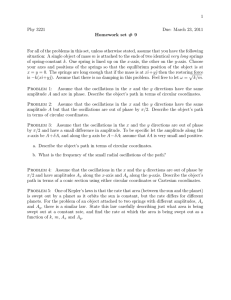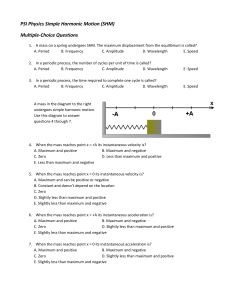Oscillating Particle Test Review Questions
advertisement
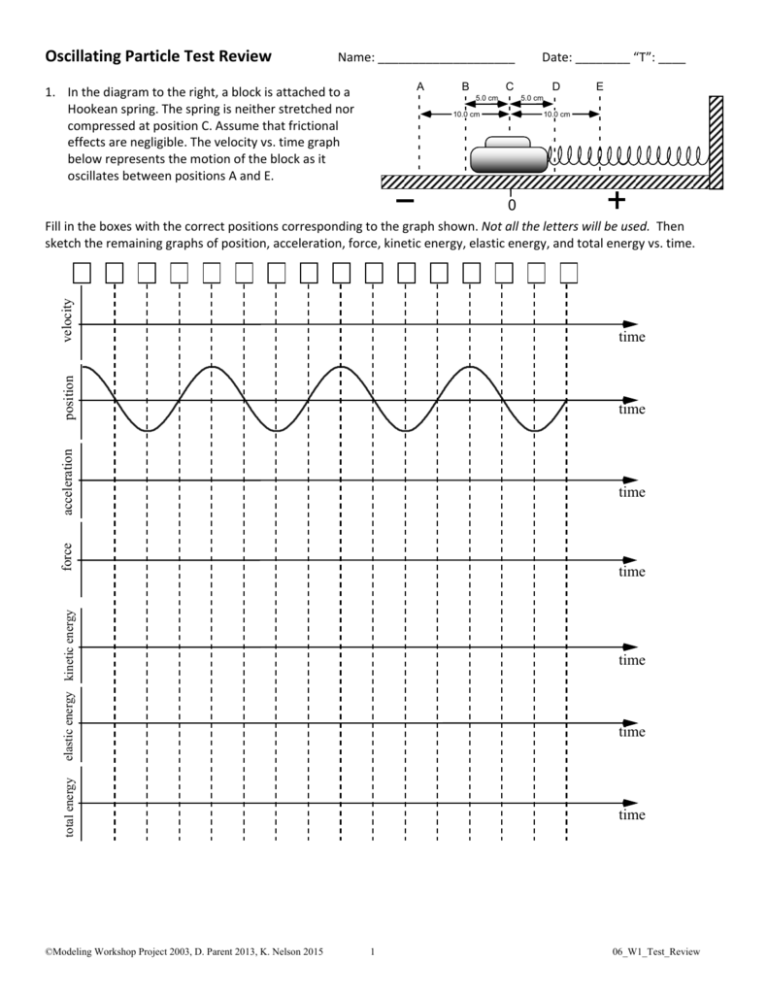
velocity time acceleration time position Oscillating Particle Test Review Name: ____________________ Date: ________ “T”: ____ A B C D E 1. In the diagram to the right, a block is attached to a 5.0 cm 5.0 cm Hookean spring. The spring is neither stretched nor 10.0 cm 10.0 cm compressed at position C. Assume that frictional effects are negligible. The velocity vs. time graph below represents the motion of the block as it oscillates between positions A and E. 0 Fill in the boxes with the correct positions corresponding to the graph shown. Not all the letters will be used. Then sketch the remaining graphs of position, acceleration, force, kinetic energy, elastic energy, and total energy vs. time. force time elastic energy kinetic energy time time total energy time ©Modeling Workshop Project 2003, D. Parent 2013, K. Nelson 2015 time 1 06_W1_Test_Review 2. When there is no friction between the hovercraft and the surface, the force required to hold the block at rest at position A is 35 N. A B a) Calculate the spring constant, k. C 10.0 cm D E 10.0 cm 20.0 cm 20.0 cm 0 b) Complete the table value below for the energy values at the various positions. In each box, show your work. Position A Position B Position C Position D Position E Eelastic Ekinetic Etotal In the next 7 questions, a mass is suspended from a spring and oscillating, as pictured below. 3. If the spring constant (k) changes by a factor of 7, then the period changes by a factor of… a.) 1 (no change) b.) 1 7 c.) 1 7 d.) 7 e.) 7 A 4. If the amplitude (A) changes by a factor of 7, then the period changes by a factor of… a.) 1 (no change) b.) 1 7 c.) 1 7 d.) 7 e.) 7 B 60 cm 5. If the oscillating mass (m) changes by a factor of 7, then the period changes by a factor of… a.) 1 (no change) b.) 1 7 c.) 1 7 d.) 7 C e.) 7 6. If the amplitude, mass, and spring constant each change by a factor of 9, then the combined result of these three changes is that the period will change by a factor of… a.) 1 (no change) b.) 9 c.) 3 d.) 81 e.) 18 7. If the mass completes 10 oscillations in 12.2 seconds, then the period of oscillation, T, is… a.) 0.122 s b.) 12.2 s c.) 1.22 s d.) 0.820 s e.) 122 s 8. If the mass completes 10 oscillations in 2.79 seconds, then the frequency of oscillation, f, is… c.) 2.79 Hz d.) 3.58 Hz e.) 0.820 Hz a.) 12.2 Hz b.) 0.358 Hz 9. What is the amplitude of the oscillation? a) 30 cm b) 60 cm c) 120 cm d) 90 cm e) 15 cm 10. Label the following horizontal axes. T T Your choices are m, A, k, 1/m, 1/k, T 1/√m, 1/√k (Note: not all used) ©Modeling Workshop Project 2003, D. Parent 2013, K. Nelson 2015 2 T 06_W1_Test_Review
